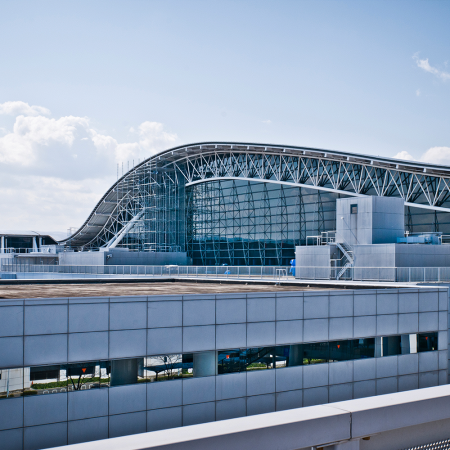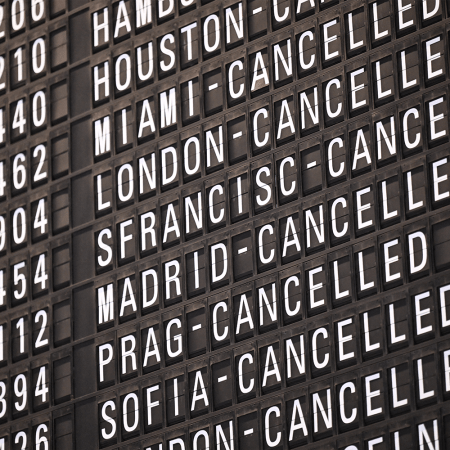Unless you’ve been living under a rock, you’ve probably heard about the chaos that’s been unfolding at Newark International Airport during the past week. It all kicked off with a brief system outage — just 30 to 90 seconds — but in that short window, air traffic controllers lost contact with all inbound flights. That’s a nightmare scenario for any airport, let alone the second-busiest one in the New York metropolitan area. Since then, several controllers have been put on trauma leave, delays and cancellations have piled up, and now we’re hearing this: a clear warning to stay far away from Newark.
“It is not a safe situation right now for the flying public. Don’t fly into Newark. Avoid Newark at all costs,” one Newark-based air traffic controller told MSNBC. That’s a strong statement coming from someone whose job is to manage the very airspace they’re advising travelers to steer clear of. And it’s not happening in a vacuum; this follows a string of troubling incidents earlier this year that have already chipped away at public confidence in air travel.
As expected, the aftermath has brought on a lot of finger-pointing — one administration blaming another, and so on. But the reality is that the writing has been on the wall for years. According to a Bloomberg News report, when radio or radar frequencies go down, there are “no fail-safes,” leaving air traffic controllers with no choice but to simply “wait for the system to come back online.” As NJ.com reported, former Transportation Secretary Pete Buttigieg repeatedly warned Congress about outdated airport infrastructure during his tenure. Meanwhile, the United States has long struggled with a shortage of air traffic controllers, a crisis that predates even the pandemic.
For the uninitiated, air traffic controllers are tasked with an extraordinary level of responsibility: monitoring and directing aircraft both in the air and on the ground, managing all airport traffic, issuing takeoff and landing clearances and coordinating with other control centers. Their role is critical to the safety and efficiency of the entire aviation system, but the demanding work environment is largely to blame for the shortage. Controllers often face mandatory overtime, including six-day workweeks, leading to fatigue and increased risk of errors.
The Journey by InsideHook
Join over 100K travelers seeking trip ideas, the latest travel news, and all the inspiration you need for your next vacation.
In recent days, current Transportation Secretary Sean Duffy has criticized the Biden administration for the shortage. However, the previous administration did secure funding to hire 2,000 new air traffic controllers in 2025 and exceeded its goal of hiring more than 1,800 last year. For its part, the Trump administration responded to the deadly D.C. crash in January by firing FAA air traffic control personnel. The irony is hard to ignore: According to PBS, preliminary investigations suggest the crash was caused by a single controller managing both commercial airline and helicopter traffic at a congested airport — essentially, a direct consequence of staffing shortages. (Notably, just before that incident, President Trump had also dismissed all members of the Aviation Security Advisory Committee, a body established by Congress in 1988 to help oversee aviation safety.)
Given this context, it’s no surprise that Newark air traffic controllers sought trauma leave following the April 28 incident. But the government’s repeated failure to create a safe and supportive working environment for controllers doesn’t just endanger them — it endangers all of us.
This past week, the FAA and the National Air Traffic Controllers Association (NATCA) announced a new, limited-time incentive package aimed at recruiting and retaining air traffic controllers. The package includes the following incentives:
- A 20% lump-sum bonus of an eligible controller’s base salary for each year they continue working past retirement eligibility, up to the mandatory retirement age of 56.
- A $5,000 bonus for academy graduates who successfully complete initial qualification training.
- A $5,000 bonus for new hires who pass their initial qualification training.
- A $10,000 bonus for academy graduates assigned to one of 13 hard-to-staff air traffic control facilities.
These incentives supplement a median annual wage of $144,580 for air traffic controllers, as reported by the U.S. Bureau of Labor Statistics in May 2024. And yet, given the high-pressure nature of the job, it’s difficult to predict whether it will be enough. As one Reddit user bluntly put it in response to the announcement: “$10K is nothing these days to work the most stressful job in America. Make it a $50K bonus or [get the fuck out of here].”
The message is clear. Controllers aren’t showing up to work and warning the public to avoid airports altogether. The system is strained, and the stakes are dangerously high.
This article appeared in an InsideHook newsletter. Sign up for free to get more on travel, wellness, style, drinking, and culture.





















